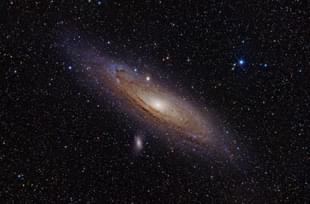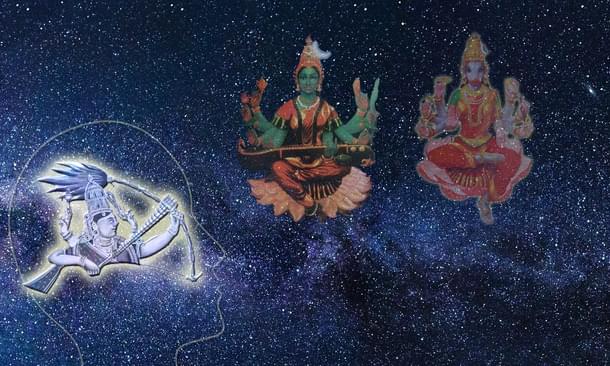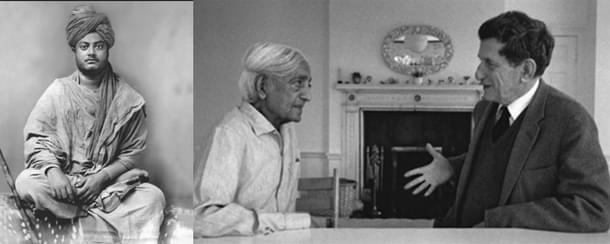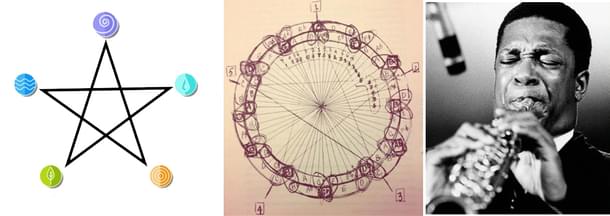Ideas
Random Meditations Through Her 1000 Names - XI
Aravindan Neelakandan
Aug 04, 2018, 06:23 PM | Updated Sep 30, 2022, 07:02 PM IST
Save & read from anywhere!
Bookmark stories for easy access on any device or the Swarajya app.


Read part ten here.
Panchatanmatrasayaka - She who holds the five tanmatras as arrows.
Just as she holds in her left front-hand the sugarcane bow of the sense-mind or manas, in her right front-hand she holds five arrows made of five different flowers which represent the five tanmatras.
What are the tanmatras ’? Hindu darshanas, particularly Sankhya, consider them very important in connecting the external and internal realities at both the psychological and existential levels. In Indic cosmology, tanmatras play an important role in ‘creating’ what we perceive as the external reality through our five senses. Swami Vivekananda beautifully and succinctly puts it :
‘The material of which the mind is composed goes also to form the subtle matter called the tanmatras . These become gross and make the external matter. That is the psychology of the Sankhya.’(Raja Yoga, 1893)
These subtle tanmatras are actually evolutes of ahankara. This means they emerge when ahankara is churned by the guna, tamas. The ahankara, or the ‘I-doer’ is in turn the evolute emerging from buddhi. The buddhi itself evolves from prakrithi.
In his Yoga Sutras, Patanjali uses the term ‘linga’ for buddhi, which means it can be inferred by the signs. As against this, the primordial substratum of which buddhi itself is an evolute is alinga, which means it has no sign. (Bryant, 2009) The five tanmatras are associated with the five sense-potentials at the psychological level and are connected to the five physical elements or bhutas at the physical level. The tanmatras are thus sense-energy potentials : they are shabda (sound potential), sparsha (touch potential), rupa (colour potential), rasa (taste potential) and gandha (smell potential). The evolution of the physical elements needs the tanmatra as 'a potential or fluid matter which is further condensed or hardened into kinetic or effective matter.' With this framework, the Srimad Bhagwata considers the evolutionary process as involving ‘three processes like mass-disintegration, energy-transformation and condensation.' (Binay Kumar Pattnaik, 2008).

Now a question may arise as to if the five bhutas (akasa, vayu, agni, jala and prithvi) are nothing but similar to the five elements in other philosophies like Greek. In fact, pre-Christian Greek tradition did speak of the five elements which has been discarded as crude initial steps into science. So, how can the five tanmatras associated with the five ‘bhutas’ be any different?
Physicist and philosopher of science, Wolfgang Smith, in his renowned book discussing the impact of quantum mechanics on the philosophy of science explains that this should be seen in a qualitative manner. Then the ancient concept of ‘essences’ make sense and even help us understand the qualitative 'essence’ embedded in nature.:
When we come to the corporeal plane, on the other hand, the qualities appear: attributes which cannot be understood or explained in quantitative terms. ... Leave out the qualities, and there remains but a single ontological domain, constituted by mathematical structure. But as we know, the qualities refuse to be exorcised. The fact, moreover, that qualities abound in the corporeal domain but are nowhere to be found on the sub-existential planes can only mean one thing: qualities betoken essence (<esse, ‘to be’); the essence, namely, of the corporeal entity. ... The corporeal domain is constituted, thus, by ‘non-mathematical’ essences-shocking as this may sound in our day.The Quantum Enigma, 1995
And then in the footnote to this discussion he points out:
A few words regarding the ancient sciences, the ones which supposedly constitute ‘primitive superstitions’. What one generally fails to realize is that the bonafide traditional sciences are primarily concerned with ‘essences’: the very thing which we have systematically excluded from our Weltanschauung. A case in point, no doubt, are the so-called five elements of the ancient cosmologies, which modern interpreters have been far too quick to identify with ‘earth’, ‘water’ and the rest, in the literal sense of these terms. ... What is still more to the point, however, is that Hindu doctrine associates the so-called five bhutas and their subtle counterparts (the tanmatras) with the five sensible qualities; which is to say that a corporeal object is audible by virtue of akasa, visible by virtue of tejas, palpable by vayu, perceptible to taste by ap, and odiferous by prithivi. In a word, the so-called five elements are what makes things perceptible according to the five sensory modes; and let us add that having once understood that things are not in fact perceptible simply by virtue of their presumed ‘atomic constitution’, it becomes clear that there must indeed be ‘elements’ of this kind.ibid, p 92 (emphasis not in the original)
So, the tanmatras are important, on psychological-physical basis, in creating a participatory reality at the very fundamental level of the physical universe and in the psychological perception of that universe.
Perhaps it is because Swami Vivekananda was rooted in this worldview of participatory reality that he made an almost accurate futuristic assessment about the course the physical sciences would take - years before the advent of the ‘New Physics’:
Take anything before you, the most material thing — take one of the most material sciences, as chemistry or physics, astronomy or biology — study it, push the study forward and forward, and the gross forms will begin to melt and become finer and finer, until they come to a point where you are bound to make a tremendous leap from these material things into the immaterial. The gross melts into the fine, physics into metaphysics, in every department of knowledge.Unity, the goal of religions, 1896
With the sense-mind as the sugarcane bow and with the five tanmatras as the arrows of flowers, She manifests this participatory reality and the physical universe. One can note here that the entire process of the manifestation of the universe from subtle psy-physical matter to the universe is associated here with sugarcane and flower.

Abirami Anthathi (18th century) speaks of the Goddess as the one who ‘flowers the universe’. Physicist David Bohm uses the very same phrases to describe this view revealed by quantum processes. When philosopher Prof. Renée Weber queries if the evolution and existence of the universe should be seen as 'the creative play (Lila in Sanskrit) of the universe, where from its deep recesses it evolves different combinations', David Bohm answers in affirmative and says:
Yes, and through that it’s unfolding and developing and flowering (if you want to use that word as Krishnamurti does) and therefore evolution is fundamental. This involves both space and time.‘The Essential David Bohm’ (Ed. Lee Nichol), Routledge 2003, p.148
The deity who emerges from the bow is Mantrini . She is described in texts as the dark coloured Shyamala. She as Matangi has a tribal form. Her ear rings are made of dried palm leaves and she wears wild flowers. Being associated with music, the chariot she rides has seven layers and makes music as it moves. The deity who manifests from the arrows of tanmatras is Dandanatha who rides the kirichakra. Kiri is the wild boar. Either the chariot is boar shaped or it can be considered as pulled by the boars. This chariot is five layered. Later she kills Vsukra - the asura of inimical illumination. Mantrini carries veena the string musical instrument.
It is significant that in the manas-tanmatras association, a Goddess holding a string musical instrument emerges. The manas-tanmatras are central to the creation of participatory reality. In the evolution and existence of this reality, the importance of music cannot be understated. While in India this connection has not been explored much by modern scholars, it has revealed itself in another tradition and culture.

In the Western culture, the relation between music and physical universe has a long history. It is traced back to the idea of ‘music of spheres’ of Pythagoras (570-490 BCE). Pythagoras asserted that this is a music that could not be heard physically. Brian L Silver, in his acclaimed book on the history of both science and philosophy of science, sees in this 'an echo here of the ancient Hindu belief that, apart from audible sound, there was an 'unstruck sound' inaudible to man.' (‘Ascent of Science’, Oxford University Press, 2000).
In late sixteenth century, Johannes Kepler used the Pythagorean worldview and combined his 'geometric and mathematical reasoning' and arrived at the famous three laws of planetary motion. In 1950s and 1960s John Coltrane (1926-1967) the legend among the Jazz musicians of all times, combined in his music Einstein’s work and 'Eastern’ wisdom. It was only three years before his death that Coltrane could meet Pandit Ravi Shankar who had been performing regularly in the US since 1956. Nevertheless, Coltrane had started listening to Ravi Shankar and spoke of how his music moved him in 1961. Ravi Shankar taught him Indian music and musical concepts. On this, ethnomusicologist Carl Clements writes:
Coltrane also developed an interest in Indian religion and philosophy. Though raised in a Methodist household, Coltrane did not consider himself to be specifically Hindu, Christian, Muslim, or of any other single faith. However, by the mid-1960s, the religion and philosophy of India took on a special importance for him. This is evident from the titles of such compositions as ‘Om’ (1965, Om) and ‘India’ (1961, Live At the Village Vanguard). In the piece ‘Om’, Coltrane’s integration of Indian religion into his music is overt. The title refers to ‘the sound that represents the reverberations of all creation in Hinduism’Carl Clements, John Coltrane and the Integration of Indian concepts in Jazz improvisation, Jazz Research Journal, 2009
Stephon Alexander, a cosmological physicist and a saxophone musician, explores the connection between Coltrane’s music, his worldview influenced by the physics of Einstein, and then his (Stephon’s) own journey between the realms of physics and Jazz music. In his book on the subject he explains:
If there is nothing outside the universe and if the universe functions like an instrument, with all the musical elements it has, then the universal instrument must play itself. In other words, the cosmic sound is the instrument and the instrument is the cosmic sound. Everything in the universe, including space-time, that supports it must vibrate or oscillate. ... If the expansion rate oscillates with a frequency of a pure tone then we have what I will call a rhythmic universe, otherwise known as a cyclic cosmology. It turns out that Einstein’s theory of relativity admits a cyclic universe as an exact solution. ... This type of universe gets us around the mind-bending question of “What happened before the big bang?” The answer is that the universe underwent a succession of contractions and expansions — there was no beginning. There is no big bang singularity, and time always existed. This is the purest tone that the universe can play. The tone itself is the oscillation of the scale of the universe. This cyclic solution is actually an ancient idea. One of the earliest versions of a cyclic cosmology came from the ancient Hindu philosophy. In this case, the universe was eternal in time and is created and destroyed in cycles that last for 8.64 billion years. Coltrane’s study of ancient Chinese and Indian philosophy and music brought him closer to current-day cosmology than he probably would have imagined. It is tempting to imagine that Coltrane’s improvisation on “Giant Steps,” which had a cyclic structure, was embodying the cosmic dance of the expansion and contraction of a cyclic universe.Stephon Alexander, ‘The Jazz of Music’, 2016

Physicist Michio Kaku, one of the co-founders of string-field theory, also explains how music provides a strong metaphor in understanding the physical reality at the very minute and the most macroscopic level:
...So the subatomic particles we see in nature are nothing but musical notes on a tiny vibrating string. What is physics? Physics is nothing but the laws of harmonics that you can write on vibrating strings. What is chemistry? Chemistry is nothing but the melody you can play on interacting vibrating strings. What is the universe? The universe is the symphony of vibrating strings. ...
In 1967, the very same year he died, John Coltrane gave a drawing of his musical scheme, a tone circle, to fellow saxophonist Yusef Lateef. It is now famous as the ‘Coltrane Mandala’. The Pentagram in the middle, is associated with five elements in Western Pagan traditions. In Indic tradition, they are more well developed and complete principles of the tanmatras: psychological-physical tools in creating reality. A coincidence? Perhaps. With the caveat that the analogies and symbolism do not map one-to-one with the discoveries of science, it becomes clear why Mantrini , who emerges from the sugarcane bow of manas, carries in her hand the veena or the string instrument. Vibrations and harmonics are basic to the participatory physical reality in which we live.

Thus, the four names from eight to eleven make the Goddess the embodiment of the physical participatory musical universe we live in and also makes us meditate on Her further.
PS: Alice Coltrane (1937-2007) wife of John Coltrane became a Hindu and adapted the name Turiyasangitananda or Turiya Alice Coltrane. A gifted musician herself, she continued the work of her husband and took it forward. In fact, while her husband explored ‘Om’, the sound-symbol of consciousness through his music, Alice Coltrane changing her name to Turiyasangitananda points out how she internalised the nature of consciousness expressed in both Om and music. This name relates this great musician to the Mandukya Upanishad’s verse 12, which associates the fourth state of consciousness with Pranava itself and the name itself is number 262 in the Sri Lalita Sahasranama -Turiya.

Aravindan is a contributing editor at Swarajya.





